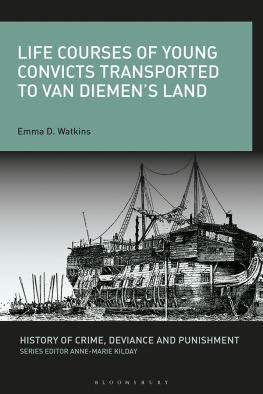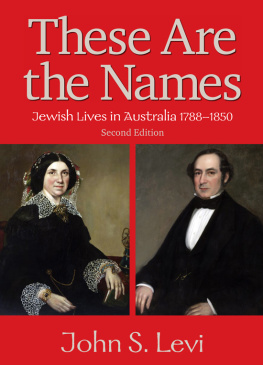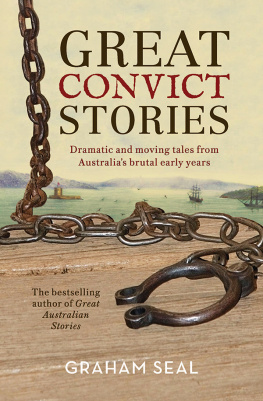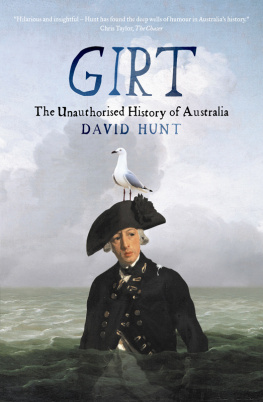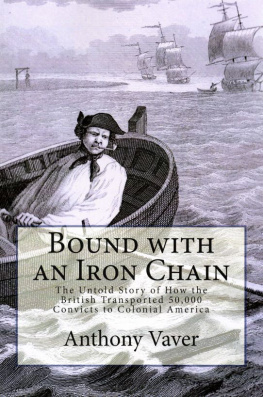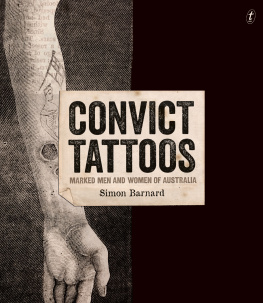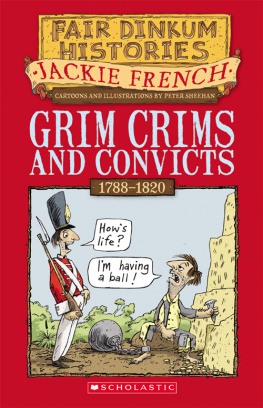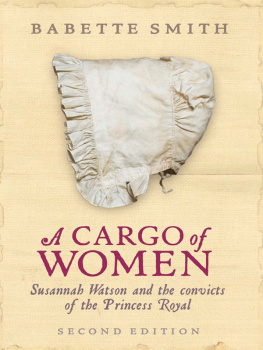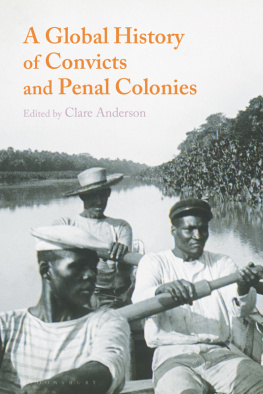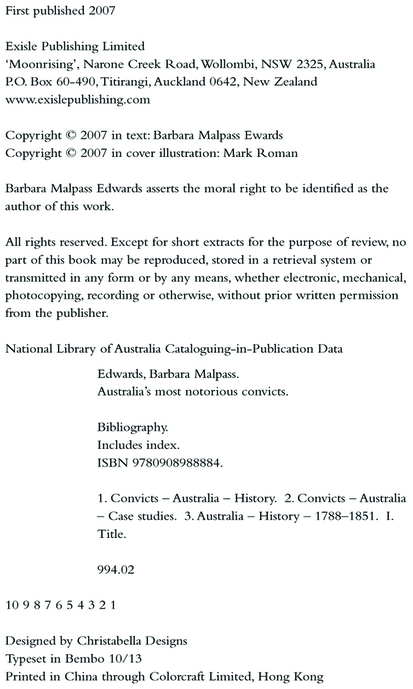Barbara Malpass Edwards - Australias Most Notorious Convicts: From thieves and bushrangers to murderers and cannibals
Here you can read online Barbara Malpass Edwards - Australias Most Notorious Convicts: From thieves and bushrangers to murderers and cannibals full text of the book (entire story) in english for free. Download pdf and epub, get meaning, cover and reviews about this ebook. year: 2010, publisher: Exisle Publishing Pty Ltd, genre: Home and family. Description of the work, (preface) as well as reviews are available. Best literature library LitArk.com created for fans of good reading and offers a wide selection of genres:
Romance novel
Science fiction
Adventure
Detective
Science
History
Home and family
Prose
Art
Politics
Computer
Non-fiction
Religion
Business
Children
Humor
Choose a favorite category and find really read worthwhile books. Enjoy immersion in the world of imagination, feel the emotions of the characters or learn something new for yourself, make an fascinating discovery.

- Book:Australias Most Notorious Convicts: From thieves and bushrangers to murderers and cannibals
- Author:
- Publisher:Exisle Publishing Pty Ltd
- Genre:
- Year:2010
- Rating:5 / 5
- Favourites:Add to favourites
- Your mark:
Australias Most Notorious Convicts: From thieves and bushrangers to murderers and cannibals: summary, description and annotation
We offer to read an annotation, description, summary or preface (depends on what the author of the book "Australias Most Notorious Convicts: From thieves and bushrangers to murderers and cannibals" wrote himself). If you haven't found the necessary information about the book — write in the comments, we will try to find it.
Thousands of convicts were transported to Australia. Of these, some managed to escape incarceration and went on to achieve notoriety in their new land. A few tried to invent a Robin Hood reputation, taking the side of the poor settler against those in authority. Some committed crimes so heinous they were both feared and despised by the general population. Their lives were desperate, their fate often tragic. AUSTRALIAS MOST NOTORIOUS CONVICTS reveals not only their stories but also the horror and brutality of the prison system they fought so hard to escape.
Thousands of convicts were transported to Australia. This Little Red Book shows what became of the most dangerous and desperate of those incarcerated in Australia, and records their deeds both foul and fascinating. Some arrived here with serious criminal records; many more escaped and became hardened criminals...
This is the story of the worst of them and those that ran the system. Multiple murderers, bushrangers, cannibals, conmen and the desperately criminal fought lifetime battles with a prison system that was often no better, managed by the incompetent, the sadistic, the ignorant and the foolhardy.
This story of the worst of Australian convicts and the system that created them is a meticulously researched insight into the tragedy, treachery, drama and characters that founded our nation.
This book is part of Exisle Publishings Little Red Books series.
Every title in the Little Red Books series provides an overview of key events, people or places in Australian history. They cover the essentials, bringing the reader up to speed on the most important, fascinating or intriguing facts. Appealing to everyone from students to pensioners whove always wanted to know a bit about that, theyre an essential part of every Australian bookshelf.
Barbara Malpass Edwards: author's other books
Who wrote Australias Most Notorious Convicts: From thieves and bushrangers to murderers and cannibals? Find out the surname, the name of the author of the book and a list of all author's works by series.

